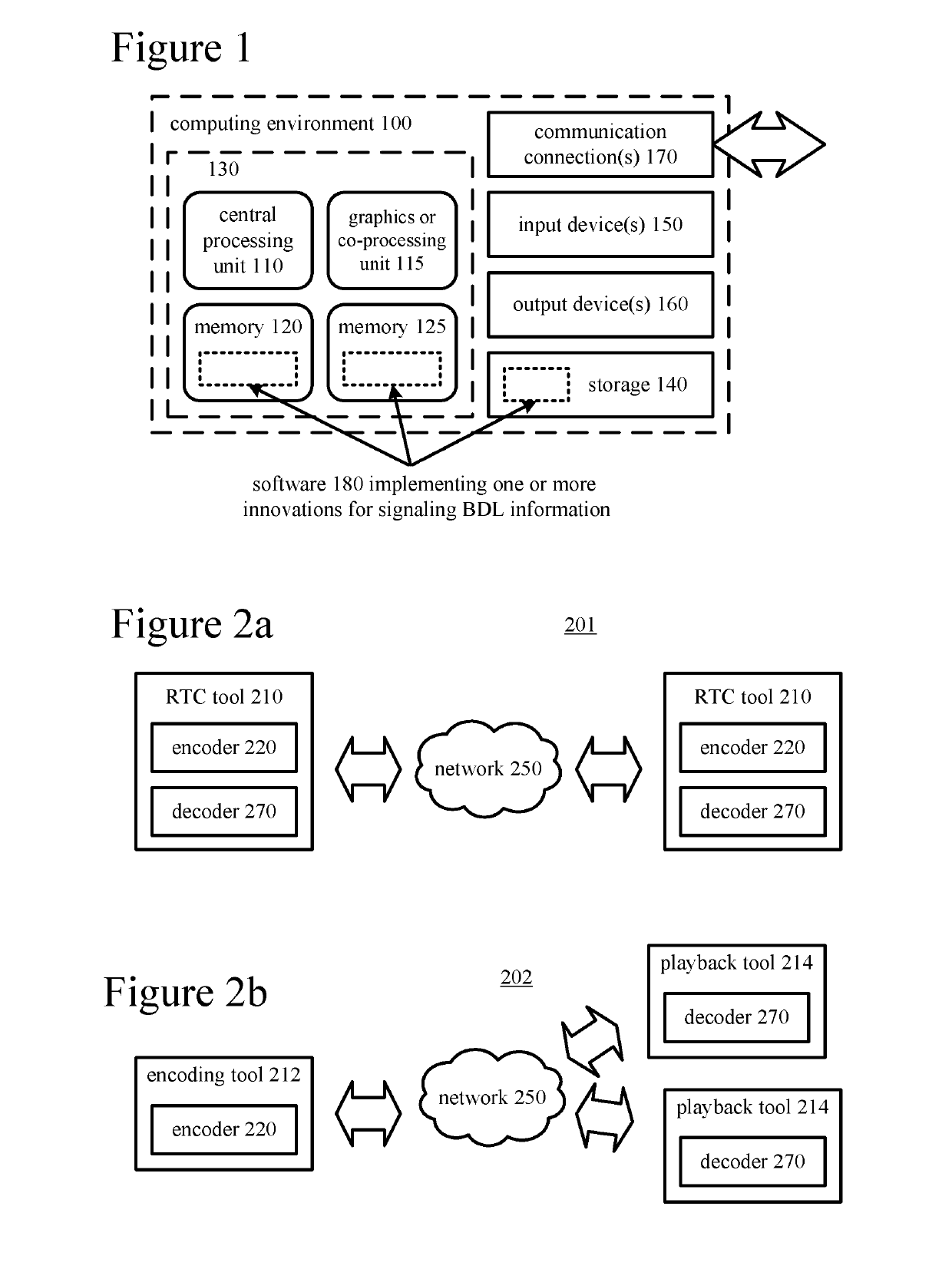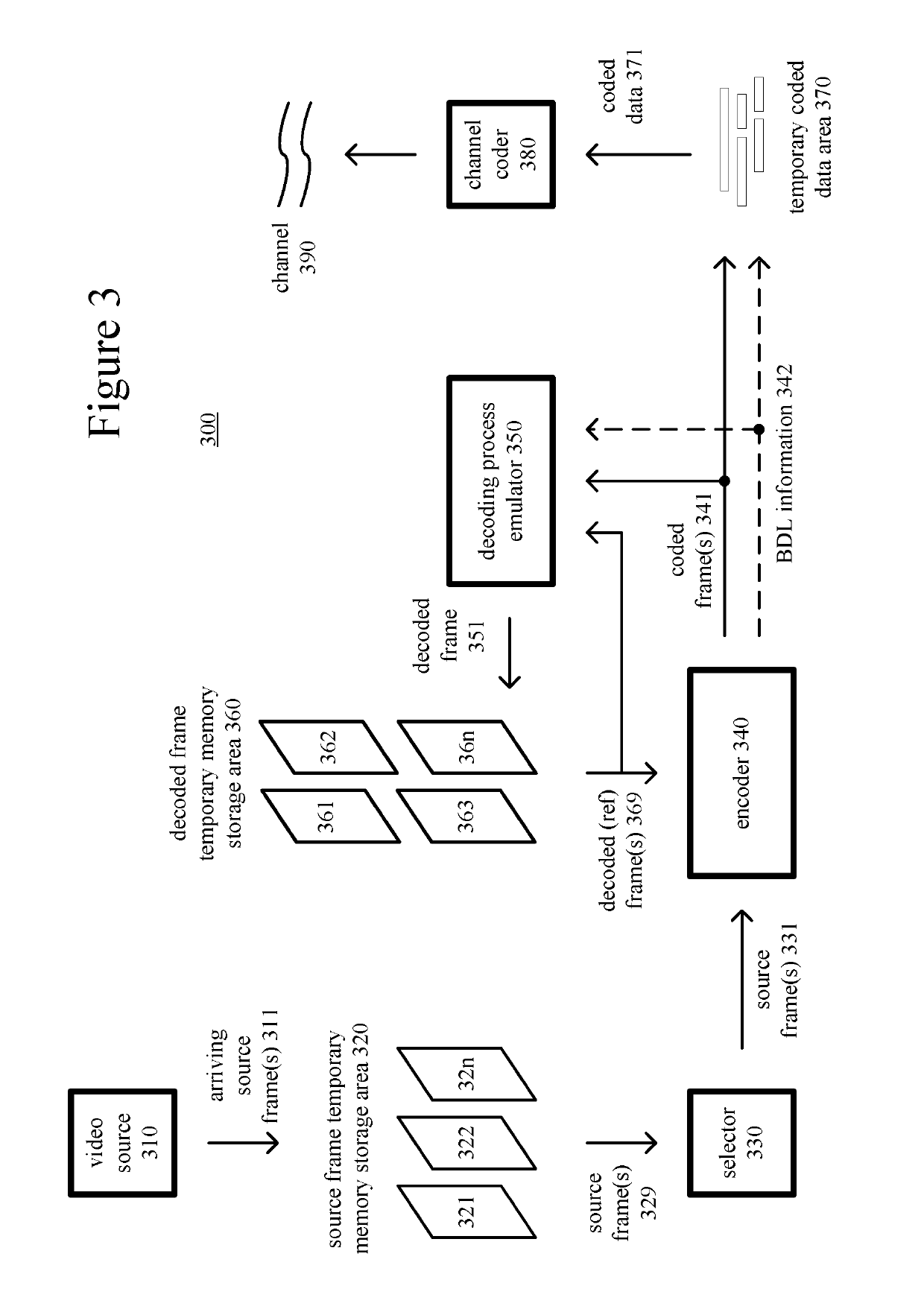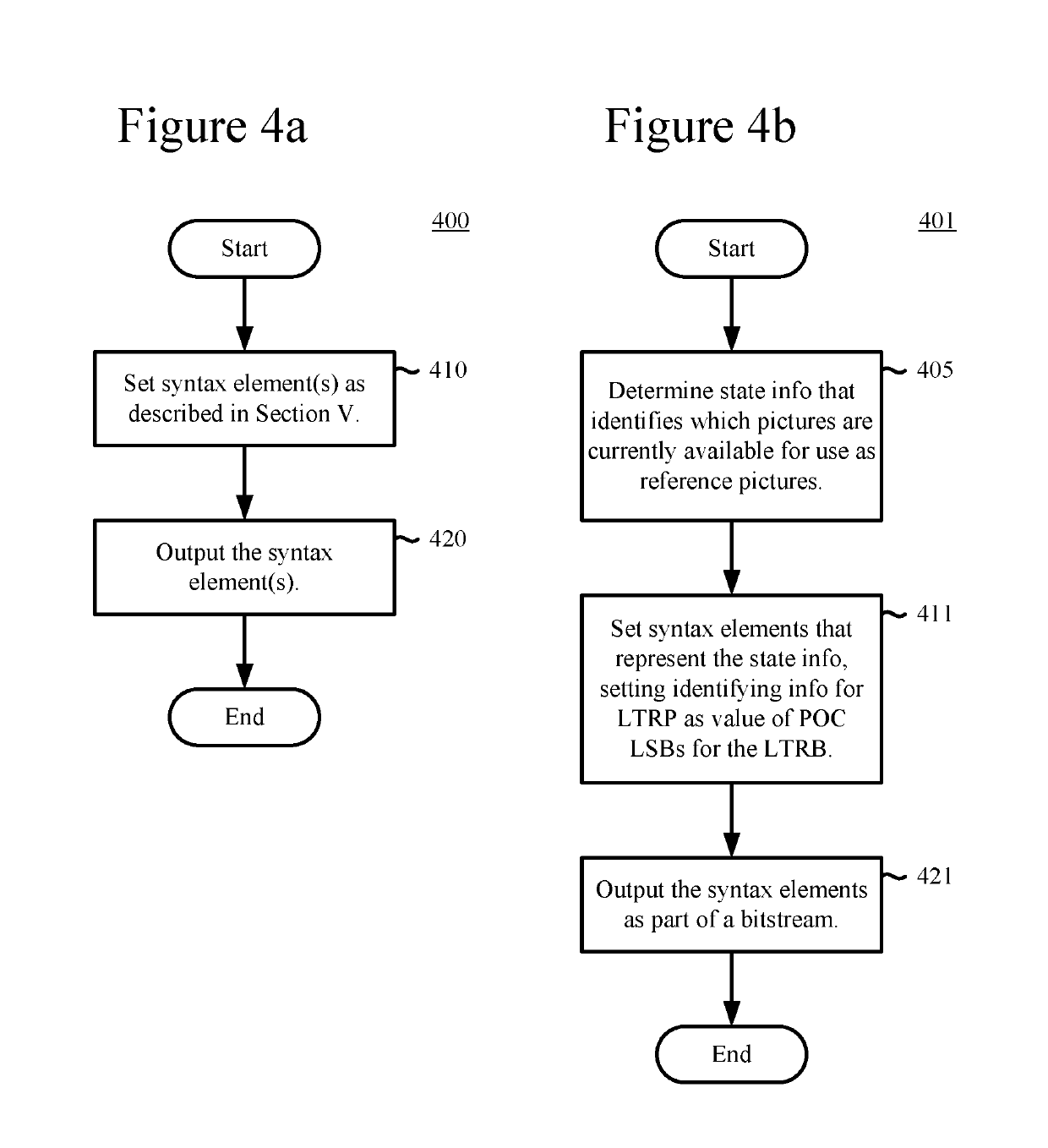Signaling of state information for a decoded picture buffer and reference picture lists
a state information and picture buffer technology, applied in the field of state information signaling for a decoded picture buffer and reference picture lists, can solve the problems of bdl information accounting management and updating challenges, and achieve the effects of reducing the bitrate associated, improving dpb management and/or rpl management, and robustness against loss of state-affecting information
- Summary
- Abstract
- Description
- Claims
- Application Information
AI Technical Summary
Benefits of technology
Problems solved by technology
Method used
Image
Examples
Embodiment Construction
[0031]The detailed description presents innovations for signaling state of a DPB and RPLs. The innovations can help reduce bitrate associated with BDL information and / or simplify the process of DPB management or RPL construction, while still supporting loss recovery.
[0032]Some of the innovations described herein are illustrated with reference to syntax elements and operations specific to the H.264 and / or HEVC standard. Such innovations can also be implemented for other standards or formats.
[0033]More generally, various alternatives to the examples described herein are possible. Certain techniques described with reference to flowchart diagrams can be altered by changing the ordering of stages shown in the flowcharts, by splitting, repeating or omitting certain stages, etc. The various aspects of signaling state of a DPB and RPLs can be used in combination or separately. Different embodiments use one or more of the described innovations. Some of the innovations described herein addres...
PUM
 Login to View More
Login to View More Abstract
Description
Claims
Application Information
 Login to View More
Login to View More - R&D
- Intellectual Property
- Life Sciences
- Materials
- Tech Scout
- Unparalleled Data Quality
- Higher Quality Content
- 60% Fewer Hallucinations
Browse by: Latest US Patents, China's latest patents, Technical Efficacy Thesaurus, Application Domain, Technology Topic, Popular Technical Reports.
© 2025 PatSnap. All rights reserved.Legal|Privacy policy|Modern Slavery Act Transparency Statement|Sitemap|About US| Contact US: help@patsnap.com



